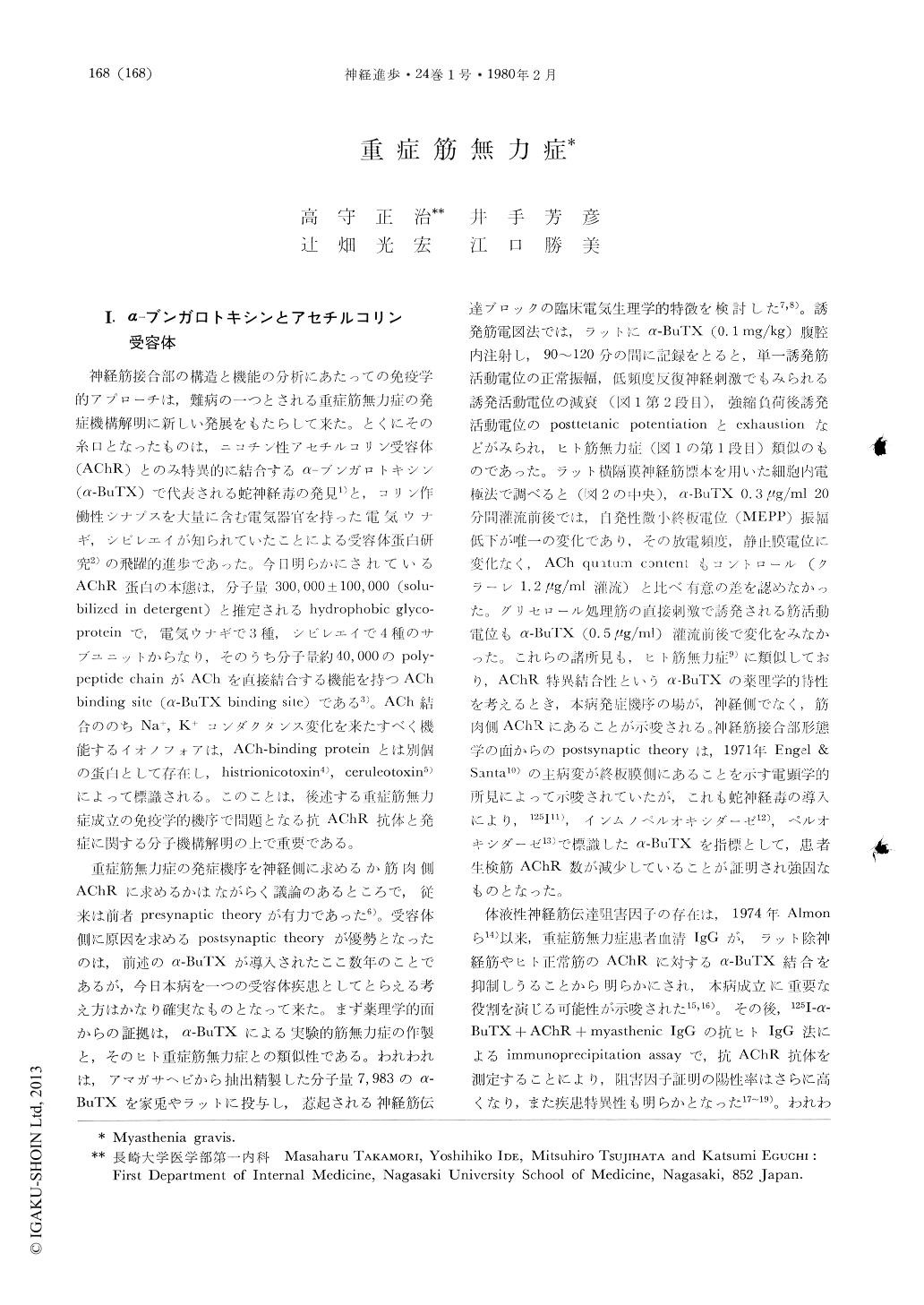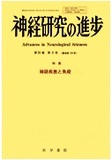Japanese
English
- 有料閲覧
- Abstract 文献概要
- 1ページ目 Look Inside
I.Α-ブンガロトキシンとアセチルコリン受容体
神経筋接合部の構造と機能の分析にあたっての免疫学的アプローチは,難病の一つとされる重症筋無力症の発症機構解明に新しい発展をもたらして来た。とくにその糸口となったものは,ニコチン性アセチルコリン受容体(AChR)とのみ特異的に結合するα-ブンガロトキシン(α-BuTX)で代表される蛇神経毒の発見1)と,コリン作働性シナプスを大量に含む電気器官を持った電気ウナギ,シビレエイが知られていたことによる受容体蛋白研究2)の飛躍的進歩であった。今日明らかにされているAChR蛋白の本態は,分子量300,000±100,000(solubilized in detergent)と推定されるhydrophobic glycoproteinで,電気ウナギで3種,シビレエイで4種のサブユニットからなり,そのうち分子量約40,000のpolypeptide chainがAChを直接結合する機能を持つAChbinding site(α-BuTX binding site)である3)。ACh結合ののちNa+,K+コンダクタンス変化を来たすべく機能するイオノフォアは,ACh-binding proteinとは別個の蛋白として存在し,histrionicotoxin4),ceruleotoxin5)によって標識される。
Myasthenia gravis is a disease caused by a defect in the neuromuscular transmission by acetylcholine. In the past several years, the postsynaptic hypothesis for the pathogenesis of the disease has been raised on the basis of the development in isolating alpha-bungarotoxin capable of binding specifically to acetylcholine receptor (AChR), and in purifying the receptor protein from electric fish organs. Pharmacophysiologic features similar to human myasthenia gravis was induced in animals when the number of available AChR was reduced experimentally by the injection of alpha-bungarotoxin.

Copyright © 1980, Igaku-Shoin Ltd. All rights reserved.


